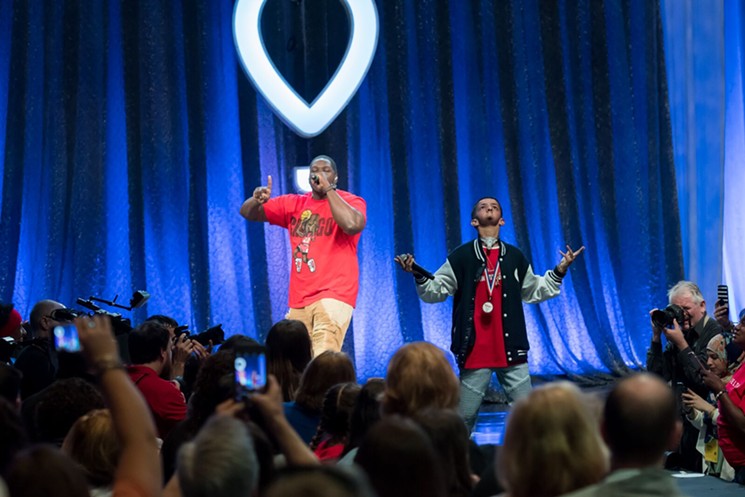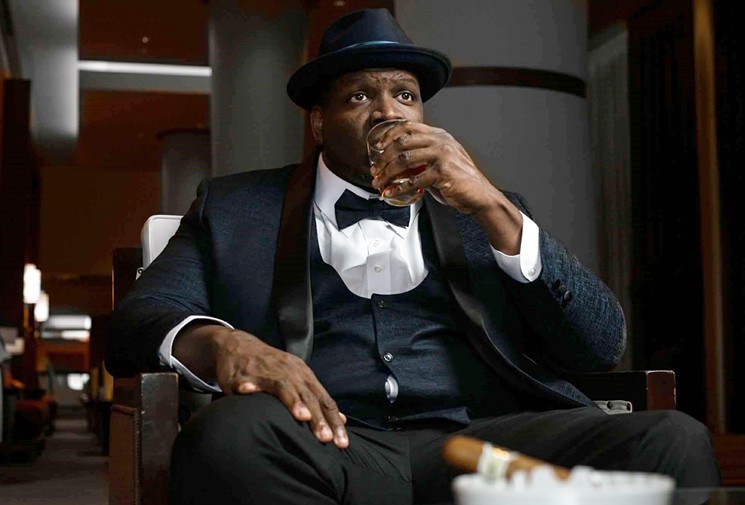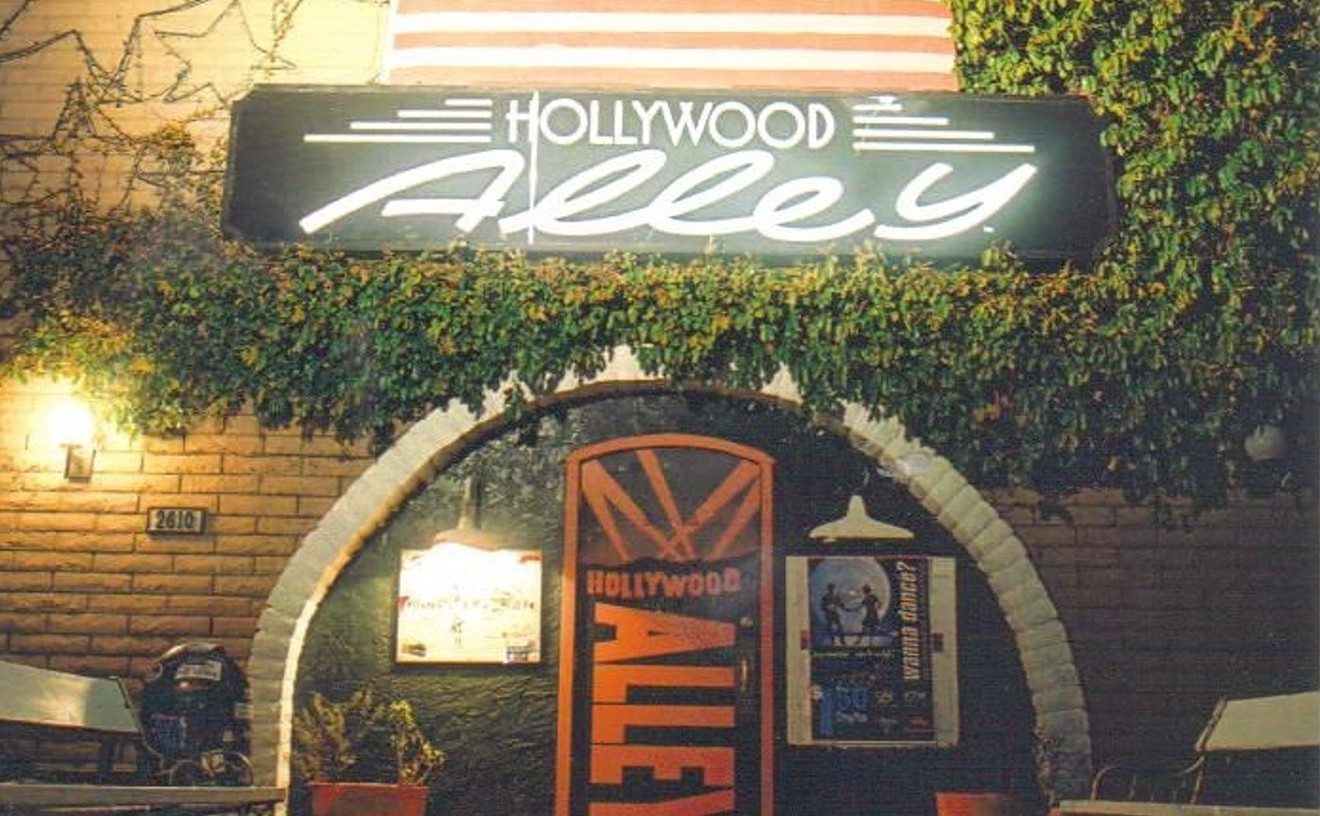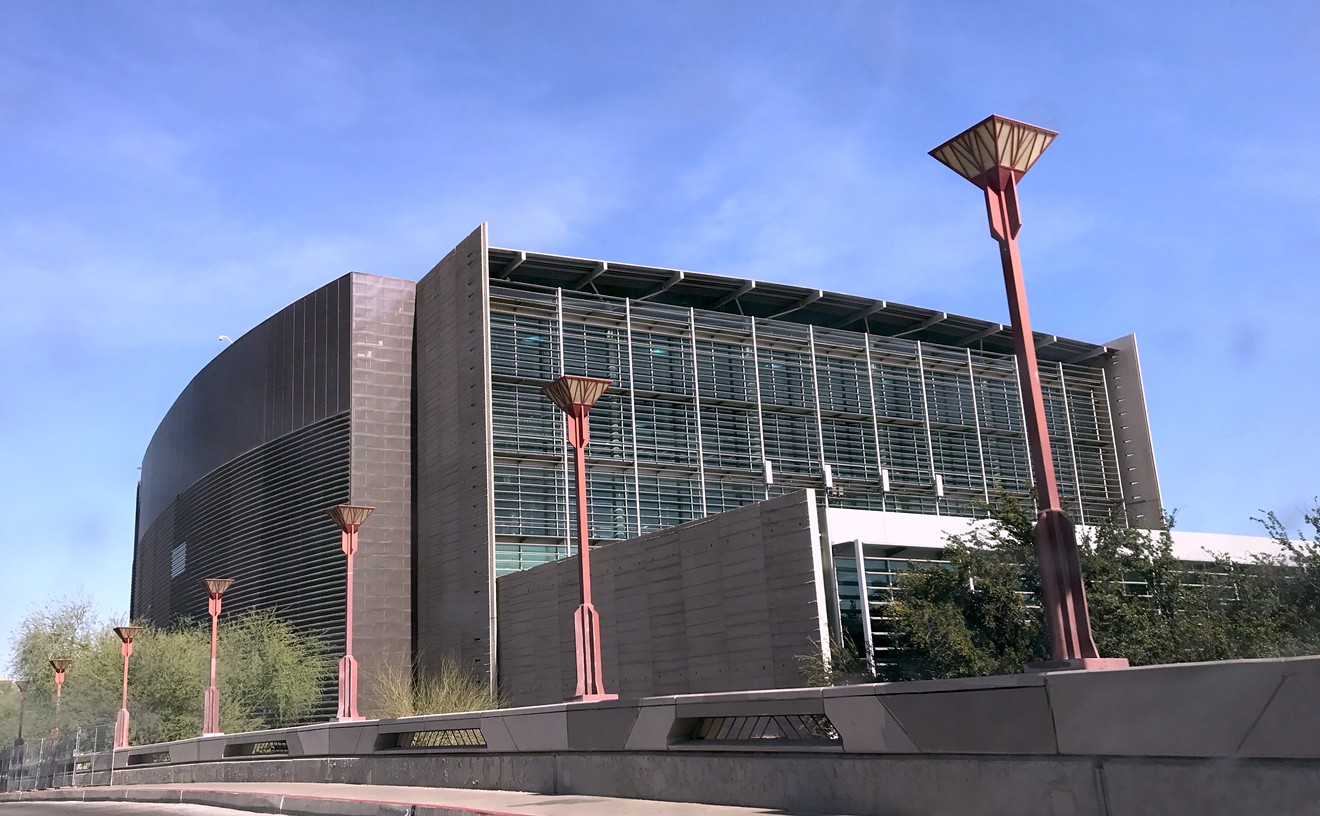When Tikey Patterson died from pancreatic cancer on January 19, Phoenix lost more than simply a rapper.
A native of the Central City South neighborhood in Phoenix, Patterson — who rapped under the name Trap House — was a community organizer, a musician who vocally supported progressive social movements, ran backpack drives for underprivileged children, tried to unite the hip-hop community, and hosted anti-gun-violence initiatives.
“He was more than a leader in the music community,” says Justus Samuel, founder of local hip-hop label Respect The Underground. “He was a leader in the urban community. He just had a voice, and he used it.”
Though he started rapping more than a decade ago, Patterson — who was 35 years old — is best known for a collaboration he did with teenage rapper Isaiah Acosta. Acosta, born without a jaw, can’t speak and must eat through a tube surgically inserted into his throat. Patterson became his voice. The two collaborated on a song, “Oxygen to Fly.” Acosta penned the lyrics, and Patterson rapped them and helped with the songwriting and production.
The song’s music video, and an additional documentary about Acosta, have garnered more than 15 million views on YouTube.
“His voice had the power and energy I wanted,” Acosta says via email. “Everytime I hear my songs, I can’t believe it. My family cries every time they hear it.”
Patterson grew up near 15th Avenue and Buckeye in Central City South, just south of downtown. Historically, the neighborhood has struggled with crime, airport noise, industrial pollution, and general undesirability. In 2000, Phoenix New Times described the neighborhood as “the historical dumping ground for just about everything and everyone that no other Phoenix neighborhood would have.”
Patterson’s longtime friend Benjamin Conner, who raps as Macadoo, called him a “rose that grew from concrete,” a reference to the posthumous Tupac Shakur poetry book.
“Coming from those neighborhoods like his ... you’re either dealing drugs or you’re a gang member,” Conner says. “He didn’t tap into any of that. He was right in the heart of it and made it through. Never been shot, never shot anyone, never drank, never smoked.”
As early as 2009, local media speculated that Patterson might be Phoenix’s first hip-hop star. While major-label deals never materialized, Patterson never stopped working. In 2012, he released “Jhessye,” channeling the Phoenix black community’s frustration at how police and media handled the disappearance/murder of 5-year-old Jhessye Shockley. He recorded “Imagine” after Mike Brown was killed by police in Missouri in 2014. He released a 2018 video that supported the striking teachers of the #RedForEd movement.
Patterson’s mother, Urshula Lusk, credits her mother, Patterson’s grandmother, for instilling the rapper with a passion for community service.
“That’s what my mom did,” Lusk says. “She gave to the community, fed the homeless, took in a lot of babies for mothers that were, like, on crack or in prison.”
In 2014 Patterson created The Black Family, a collective of local artists who united under the slogan “Hate is for the weak.” The Arizona hip-hop scene had a reputation for vicious infighting and tribal divisions. Patterson and The Black Family sought to change that.
In 2016, he started his Put the Guns Down Initiative, which sought to stem the eruption of gun violence in his neighborhood.
“The Put the Guns Down movement? He was actually keeping people alive,” Conner says. “[The movement reached] people who had no connection to music or hip-hop or the scene. ... You’d drive through the ’hood and see [teenagers] with ‘Put the Guns Down’ shirts.”
Patterson signed a deal with Samuel’s Respect The Underground in early 2018. In July, his health began to deteriorate. Doctors were late to diagnose what turned out to be Stage IV pancreatic cancer, which has a survival rate of just 3 percent.
After he announced his illness on social media, Respect The Underground organized Trap Day, a fundraising concert in Patterson’s honor.
“He needed help,” Samuel says. “Not just from a financial perspective — showing him we loved him, showing him we cared.”
Patterson was a bodybuilder, and at 6’4” was built like a professional wrestler. Too weak to attend the event, he released a video from his hospital bed on January 5. Patterson appeared gaunt, the muscle on his frame devoured by the cancer.
“Ultimately I want to say, don’t let this be the only time we come together,” Patterson said. “Make sure we do that for positive events. Make sure we band together.”
Patterson’s funeral happened on January 26. It was an all-day event, with a viewing and a procession. Samuel said that though he’s been to many funerals, he found himself speechless at Patterson’s.
“The butterfly effect of Trap House’s legacy within our hip-hop community and community as a whole will last a lifetime,” Samuel says.

Audio By Carbonatix
[
{
"name": "Air - MediumRectangle - Inline Content - Mobile Display Size",
"component": "18478561",
"insertPoint": "2",
"requiredCountToDisplay": "2",
"watchElement": ".fdn-content-body",
"astAdList": [
{
"adType": "rectangle",
"displayTargets": "mobile"
}
]
},{
"name": "Editor Picks",
"component": "16759093",
"insertPoint": "4",
"requiredCountToDisplay": "1",
"watchElement": ".fdn-content-body",
"astAdList": [
{
"adType": "rectangle",
"displayTargets": "desktop|tablet"
},{
"adType": "rectangle",
"displayTargets": "desktop|tablet|mobile"
}
]
},{
"name": "Inline Links",
"component": "17980324",
"insertPoint": "8th",
"startingPoint": 8,
"requiredCountToDisplay": "7",
"maxInsertions": 25
},{
"name": "Air - MediumRectangle - Combo - Inline Content",
"component": "16759092",
"insertPoint": "8th",
"startingPoint": 8,
"requiredCountToDisplay": "7",
"maxInsertions": 25,
"watchElement": ".fdn-content-body",
"astAdList": [
{
"adType": "rectangle",
"displayTargets": "desktop|tablet"
},{
"adType": "rectangle",
"displayTargets": "desktop|tablet|mobile"
}
]
},{
"name": "Inline Links",
"component": "17980324",
"insertPoint": "8th",
"startingPoint": 12,
"requiredCountToDisplay": "11",
"maxInsertions": 24
},{
"name": "Air - Leaderboard Tower - Combo - Inline Content",
"component": "16759094",
"insertPoint": "8th",
"startingPoint": 12,
"requiredCountToDisplay": "11",
"maxInsertions": 24,
"watchElement": ".fdn-content-body",
"astAdList": [
{
"adType": "leaderboardInlineContent",
"displayTargets": "desktop|tablet"
},{
"adType": "tower",
"displayTargets": "mobile"
}
]
}
]














